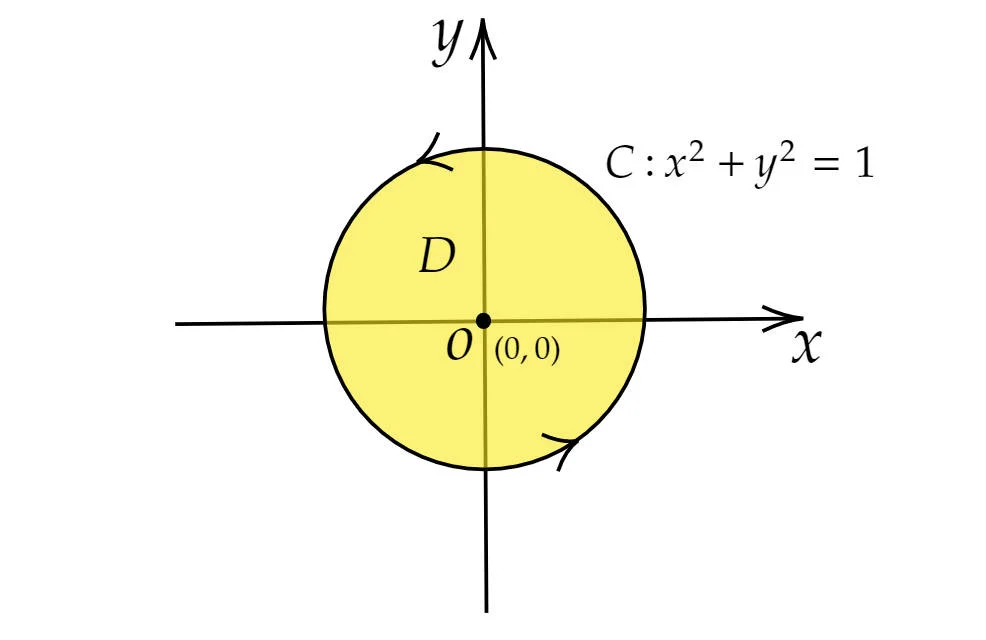Discussion of Green's Theorem (2)

1 Question:
Evaluate
where $C$ is a unit circle with centre $(0,0)$, traced in the anti-clockwise direction.
2 Discussion:
Since the curve $C$ is given by $x^2+y^2=1$, the corresponding domain $D$ enclosed by $C$ is:
which is a disc without any holes.
The corresponding diagram is as below:

Next,
$$ \int_C\frac{xdy-ydx}{\pi(x^2+y^2)}=\frac{1}{\pi}\int_C \begin{pmatrix} \frac{-y}{x^2+y^2}\\ \frac{xdy}{x^2+y^2} \end{pmatrix} \cdot \begin{pmatrix} dx\\ dy \end{pmatrix} =\frac{1}{\pi}\int_C F \cdot dr, $$where $F=\begin{pmatrix}\frac{-y}{x^2+y^2}\\ \frac{x}{x^2+y^2}\end{pmatrix}=\begin{pmatrix}P\\ Q\end{pmatrix}$, $dr=\begin{pmatrix} dx\ dy\end{pmatrix}$, and $r=r(t)$ is the parametric equation of the curve $C$.
Note that $F$ is undefined at $(x,y)=(0,0)$.
2.1 Idea 1:
Recall, for a vector field $F$, the line integral of $F$ along $C$ is
For this problem, $r(t)=\begin{pmatrix}\cos t\\ \sin t\end{pmatrix}, 0 \leq t \leq 2\pi$, and hence,
2.2 Idea 2:
Assume $ F=\begin{pmatrix}P\\ Q\end{pmatrix}$. We know $F$ is undefined at $O(0,0)$, and then it’s easy to check $P_y=Q_x$ when $(x,y)$ is on the domain $D$ except the origin $O(0,0)$.
Thus, by the test for the conservative vector field, $F$ is conservative on $D$ except $(0,0)$, NOT on the whole region $D$ or for the each point of region $D$.
Hence, Fundamental Theorem of Line integrals is NOT applicable here, which is, we can not perform
2.3 Idea 3:
As $F$ is undefined at $O(0,0)$,the actual domain of integration in this problem should be
which is a disc with a hole,and we call it non-closed. Hence, Green’s Theorem can NOT be applied directly to solve this kind of problem.
2.3.1 Remark:
One of the requirement for Green’s Theorem is the domain must be closed, for example,

3 Credit:
The question is from Dr. Tuan Seng Chew.




